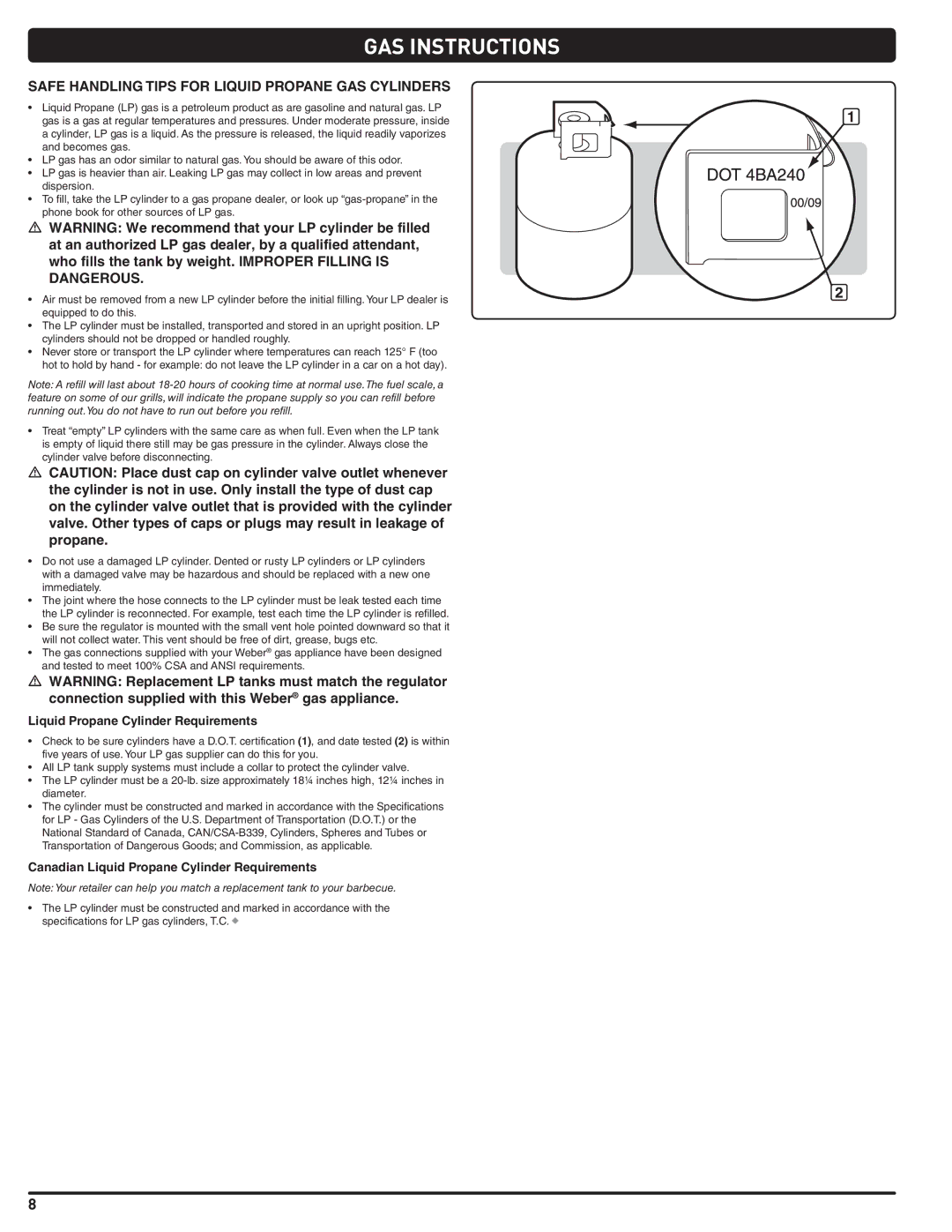660- LP, Weber specifications
The Weber Weber 660-LP is a premier gas grill that embodies quality engineering and innovative design, catering to both beginners and seasoned grilling enthusiasts. This grill stands out in the market for its combination of performance, versatility, and user-friendly features, making it a substantial choice for outdoor cooking.One of the defining features of the Weber 660-LP is its high BTU output. With a powerful main burner system, it provides ample heat distribution across the cooking surface, ensuring that food is cooked evenly and efficiently. The grill boasts a total cooking area that accommodates up to 20 burgers at once, making it ideal for gatherings, barbecues, and family meals.
Equipped with innovative grilling technology, the Weber 660-LP incorporates the “GS4 Grilling System.” This unique system enhances the grilling experience by integrating four key features: a powerful ignition system for reliable startup, improved burners for consistent heat distribution, a grease management system for easy clean-up, and a flavorizer bar design that enhances flavor while preventing flare-ups.
The construction of the Weber 660-LP is another point of admiration. Made from high-quality stainless steel, the grill is built to withstand the elements, ensuring durability and longevity. Its spacious side tables offer additional prep space, while integrated hooks provide convenient storage for grilling tools.
Additionally, the 660-LP features open cart design for easy access to the propane tank and includes built-in hooks for tool organization. This thoughtful design simplifies the grilling process, allowing users to focus on the cooking rather than the setup and storage.
Another highlight of the Weber 660-LP is its efficient ignition system, which uses a simple push button to ignite the burners reliably. This feature reduces frustration and enhances the overall grilling experience, making it accessible for grillers of all skill levels.
With its impressive array of features and technologies, the Weber Weber 660-LP gas grill delivers exceptional performance, making it a must-have for anyone serious about outdoor cooking. Whether you’re searing steaks, grilling vegetables, or hosting a backyard party, this grill ensures delicious results every time, transforming your grilling sessions into memorable culinary experiences.

